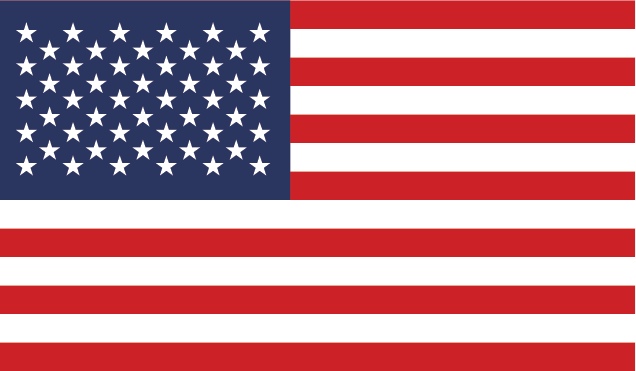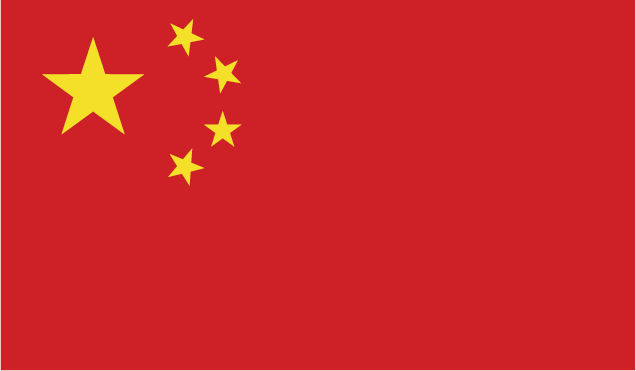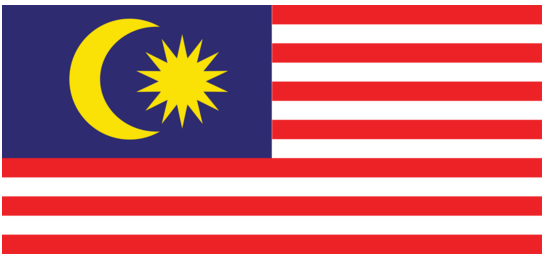
How to Implement a China +1 Supplier Strategy in 2025 (Step-by-Step Guide)
china plus 1 strategy implementation
Introduction: The Evolution of China+1 Strategy in 2025
The China+1 strategy—once a rudimentary approach to avoiding overreliance on Chinese manufacturing—has transformed into a sophisticated risk-mitigation framework in 2025. What began as a post-COVID play to buffer against supply chain disruptions now serves as a critical response to escalating U.S.-China trade tensions, rising labor costs in China, and the dissolution of traditional global supply networks1. For ASEAN businesses, this strategy is no longer optional—it’s a survival mechanism in an era where geopolitical loyalty tests and tariffs impact even components sourced indirectly from China1.
Origins of China+1: A Reactive Start
The concept emerged in the early 2010s as multinational corporations sought to balance their Chinese manufacturing with production in India or Southeast Asia. Initially, it focused on cost optimization—leveraging cheaper labor in Vietnam or Indonesia while retaining core operations in China4. However, these early efforts lacked strategic depth, often treating ASEAN nations as complementary factories rather than standalone hubs.
2025 Catalysts: A Perfect Storm
Three factors have now pushed China+1 into a mandatory operational shift:
- U.S.-China Decoupling: New U.S. tariffs targeting Chinese goods and components force companies to prove supply chain independence from China—even if products are assembled elsewhere1. This has exposed vulnerabilities in traditional "China + 1" setups where components still originate from Chinese suppliers.
- Cost Pressures: Rising wages in China and post-COVID quality control demands have narrowed the cost advantage of maintaining Chinese operations. Meanwhile, ASEAN nations like Vietnam and Thailand now offer competitive labor rates paired with trade agreement access4.
- Regulatory Scrutiny: Western governments are increasingly auditing supply chains for forced labor, IP theft, or dual-use technology. This requires companies to document supplier origins to avoid sanctions—a reality making purely local sourcing in ASEAN more practical than multi-country networks1.
Reimagining China+1 for ASEAN Businesses
In 2025, the strategy demands more than just adding a second production site. It requires regionalized value chains that integrate R&D, component sourcing, and distribution within ASEAN1. For example, an electronics manufacturer might:
- Maintain core R&D in Shenzhen
- Shift high-tariff components to Thailand
- Relocate final assembly to Vietnam
- Source raw materials from Indonesia
This approach addresses two critical gaps of earlier strategies:
| Component | Traditional China+1 | 2025 Reimagined Strategy |
|---|---|---|
| Supply Chain Traceability | Basic origin documentation | Digital tracking from raw material to end product[1] |
| Risk Mitigation | Geographic diversification | Political risk hedging through trade agreement alignment[4] |
| Labor Dependency | Competing to retain Chinese workers | Building ASEAN-specific workforce development programs[5] |
“A product made in Vietnam isn’t safe from tariffs if its components link back to China. The new doctrine evaluates who makes it, with what technology, and for what purpose.” – World Economic Forum analysis1
ASEAN businesses face unique advantages and challenges in this landscape. Their proximity to China allows partial supply chain retention while new free trade agreements (like RCEP) facilitate cross-border collaboration. However, infrastructure gaps and varying labor regulations require tailored approaches4.
Transition to Next Section: While understanding the strategy’s evolution is crucial, actionable implementation begins with self-assessment. In our next section, we’ll explore how to systematically identify vulnerabilities in your current supply chain—from tariff-exposed products to hidden dependencies on Chinese intermediaries.
Step 1: Assess Your Current Supply Chain Vulnerabilities
Understanding Hidden Dependencies
ASEAN businesses often underestimate how deeply entangled their operations are with Chinese suppliers—even if final assembly happens elsewhere. A thorough audit requires exposing these invisible dependencies, including sub-suppliers that source materials from China. For example, a Vietnamese assembler of smartphones might use components fabricated in Hanoi but rely on Chinese microchips or rare earth minerals1.
Practical Audit Framework
Here’s a systematic approach to map vulnerabilities:
-
Tariff Exposure Analysis
- Tariff-Exposed Products: Cross-reference your product list against the new 84% U.S. tariffs targeting Chinese imports1.
- Components at Risk: Identify parts subject to Chinese export controls (e.g., tungsten, gallium)1.
- Indirect Exposure: Trace components flowing through third-party suppliers in India or Thailand that still source from China6.
Template: Tariff Exposure Tracker
Product Code Component Origin Chinese Input? U.S. Tariff Rate Dual-Use Risk X1234 PCB Assembly Yes (Shenzhen) 84% Low Y5678 Aluminum Frame Indirect (Thai supplier sources from China) 34% High (used in aerospace) -
Cost Sensitivity Breakdown
- Direct Cost Impact: Model tariff increases against base costs. For example, a 10% tariff on steel imports adds $0.50 to raw material costs per unit3.
- Indirect Costs: Factor in higher logistics expenses from rerouting through ASEAN ports or nearshore manufacturing3.
Case Study: Electronics Manufacturer
A company producing solar panels in Vietnam discovered that 65% of its battery cells depended on Chinese cobalt. While direct tariff exposure was low (10%), the reliance on secondary suppliers created supply chain fragility during U.S.-China trade fluctuations6. -
Logistical Dependency Mapping
- Time Sensitivity: Track lead times for Chinese components. Items like rare earth magnets often face 6-8 week delivery windows1.
- Geographic Overlap: Map supplier locations against China’s Unreliable Entity List updates to anticipate blocked partnerships1.
Template: Logistical Risk Assessment
Supplier Location Critical Components Lead Time Sanction Risk Shenzhen Tech China Semiconductor chips 8 weeks High (IE list) ThaiElectrics Thailand Casing materials 4 weeks Low -
Political Risk Stress Testing
- Regulatory Shifts: Monitor ASEAN countries’ alignment with U.S. sanctions. For instance, Indonesia’s participation in the Global Minimum Tax initiative may affect cross-border capital flow6.
- Geopolitical Fault Lines: Assess exposure to contested regions (e.g., South China Sea supply routes) that could disrupt waterborne logistics8.
Actionable Next Steps
After auditing, prioritize vulnerabilities using a risk matrix:
- High-Impact/High-Probability: Immediate mitigation for components like rare earth magnets or semiconductor chips1.
- High-Impact/Low-Probability: Build contingency plans, such as pre-negotiating contracts with backup suppliers in Malaysia or India3.
- Low-Impact/Highest-Proximity: Maintain minimal diversification efforts, focusing on core dependencies5.
“The most dangerous vulnerabilities aren’t the ones you see—it’s the ones you don’t. A single Chinese-middleman supplier in your chain can invalidate your ‘China-free’ certification under new U.S. scrutiny.” — Regional Procurement Director, Southeast Asian OEM
This assessment lays the foundation for Step 2, where we’ll evaluate ASEAN alternatives based on your now-mapped vulnerabilities. Whether shifting to Vietnam’s electronics clusters or leveraging Thailand’s automotive hubs, your diversification strategy must align with both tariff realities and logistical feasibility.
Step 2: Select ASEAN Countries for Diversification
Implementing a China+1 strategy isn’t just about picking “any” ASEAN market—it’s about aligning your business priorities with regional strengths. Here’s how to evaluate Vietnam, Philippines, Indonesia, and Thailand using five critical criteria.
Evaluating Alternatives: Country-by-Country Breakdown
Vietnam: The Electronics and Textile Powerhouse
Vietnam stands out as a cost-competitive hub with labor costs 30-50% lower than China in manufacturing6. Its strategic position along major shipping routes reduces logistics delays, while RCEP and ASEAN FTAs offer tariff-free access to 15 major markets4. However, Vietnam’s infrastructure readiness varies:
- Strengths: Modern industrial parks in Hanoi and Ho Chi Minh City host companies like Samsung and Intel, with dedicated tech zones for electronics4.
- Gaps: Limited domestic component ecosystems force reliance on international suppliers—65% of Vietnamese manufacturing still depends on imported raw materials6.
Political stability is a mixed bag. The government actively courts foreign investment with corporate tax incentives (up to 10% reduced rates for high-tech projects), but strict labor regulations can delay workforce scaling6.
Thailand: Automotive Dominance and Strategic Diversification
Thailand’s automotive ecosystem makes it ideal for relocating high-value manufacturing. Challenges:
- Labor Costs: 15-20% higher than Vietnam but competitive for skilled roles like EV battery assembly2.
- Infrastructure: World-class automotive clusters (e.g., Mazda’s $150M electrified SUV plant) and proximity to China via the South China Sea3.
- FTA Access: Full RCEP integration allows seamless trade with Japan and South Korea, critical for automotive supply chains2.
Recent investments in EV components and semiconductors ($30B FDI projected for 2025) signal strong political commitment to manufacturing3. However, high dependency on Japanese and South Korean automakers limits supplier diversity2.
Indonesia: Raw Material Riches and Emerging Potential
Indonesia offers unique advantages for resource-intensive industries (e.g., nickel for EV batteries, rubber). Challenges:
- Labor Costs: Emerging as a “new low-cost” contender with wages 20% below Vietnamese levels in textiles and basic assembly2.
- Infrastructure: Underdeveloped ports and uneven power grids create logistical hurdles2.
- FTA Access: Full ASEAN FTA participation but weaker RCEP integration compared to Vietnam/Thailand4.
Political stability remains uncertain due to regionalization of economic policies and corruption risks, making it riskier for high-value manufacturing5.
Philippines: Emerging Tech and Aerospace Hub
The Philippines focuses on mid- to high-tech industries, leveraging English-speaking talent pools. Challenges:
- Labor Costs: 25-35% higher than Vietnam but competitive for R&D-adjacent roles like quality control2.
- Infrastructure: Modern but limited to Metro Manila; provincial industrial zones remain underdeveloped2.
- FTA Access: Less favorable than neighbors (no RCEP membership), complicating tariff-free exports4.
Political stability is stable but lacks Thailand’s proactive FDI incentives, making it better suited for local expansion than large-scale relocation3.
Key Criteria Comparisons: Vietnam, Thailand, Indonesia, Philippines
| Criteria | Vietnam | Thailand | Indonesia | Philippines |
|---|---|---|---|---|
| Labor Costs | $150-$250/month | $200-$300/month | $120-$180/month | $180-$280/month |
| Infrastructure | Modern tech clusters | World-class auto hubs | Underdeveloped ports | Metro Manila-focused |
| FTA Access | RCEP, ASEAN FTAs | RCEP, ASEAN FTAs | ASEAN FTAs (weak) | Limited (no RCEP) |
| Proximity to China | Moderate (shipping) | High (maritime routes) | Medium (island chain) | Low (distance) |
| Political Stability | Moderate (regulatory strictness) | High (FDI surge) | Medium (corruption risks) | Moderate (english advantage) |
Data sources: Labor costs 2, FTA access 4, infrastructure 3, proximity 1.
Relocation vs Local Expansion Cost-Benefit Analysis
Relocation to Vietnam
Benefits: Low labor costs, access to RCEP markets, established electronics clusters.
Drawbacks: High upfront costs for infrastructure vs China.
Matrix:
| Factor | Relocation Cost | Local Expansion Cost |
|---|---|---|
| Labor | $600k setup | $200k incremental |
| Tariff Avoidance | Full RCEP coverage | Limited |
| Supply Chain | 1-year transition | 3-6 months |
Relocation to Thailand
Benefits: Proven automotive ecosystem, seamless Japan/SK procurement.
Drawbacks: Higher operational costs vs Vietnam/Indonesia.
Matrix:
| Factor | Relocation Cost | Local Expansion Cost |
|---|---|---|
| Land | $500k (industrial park) | $150k leased facility |
| Skilled Labor | $30k/year per engineer | $15k/year (existing staff) |
| Customs | 2x faster clearance vs China | Same as current ops |
Strategic Recommendations
- Vietnam First: Prioritize for electronics and textiles needing cost efficiency and RCEP access. Use Bac Giang province for high-tech assembly4.
- Thailand for Autos: Relocate EV battery/semiconductor production to leverage Mazda and Hyundai investments3.
- Indonesia for Resources: Expand nickel refining and rubber processing for EV supply chains5.
- Philippines for Tech: Keep existing plants for quality control/IT services but avoid new high-cost investments.
“Don’t treat ASEAN countries as interchangeable pawns. Vietnam’s electronics clusters and Thailand’s auto hubs are specialized tools—pick the right one for your product type.” – Supply Chain Manager, Singaporean OEM
This regional specialization reduces risks. For example, a company producing solar panels could:
- Relocate battery assembly to Thailand (low tariff exposure)3.
- Expand glass panel production in Vietnam (leverage low labor)6.
- Source rare earths from Indonesia (tap raw material strengths)5.
The key is aligning your product’s value chain with each country’s unique advantages.
Transition to Next Section: Choosing the right markets is Step Two—building those relationships is Step Three. In our next chapter, we’ll explore how to secure reliable suppliers in these new markets while navigating ASEAN’s complex regulatory landscape.
Step 3: Building Supplier Relationships in New Markets
Securing reliable suppliers in ASEAN isn’t just about finding cheaper labor—it’s about constructing localized ecosystems that mirror China’s efficiency while avoiding geopolitical risks. Let’s break down actionable strategies for 2025.
1. Due Diligence: Proving Origin Beyond the Surface
ASEAN businesses can’t afford suppliers with hidden Chinese ties. Start with audit-grade due diligence:
| Action | Why It Matters |
|---|---|
| Supplier Traceability | Map every component to its raw material source. A Vietnamese assemblers using Chinese microchips in "tariff-free" products risks invalidating "China+1" compliance[1][6]. |
| Regulatory Alignment | Verify suppliers comply with RCEP’s Rules of Origin and US Export Control Reform Act (ECRA). For example, Malaysian semiconductor firms must prove no Chinese IP in their wafer fabrication[4][6]. |
| ESG Screening | Check for labor practices and environmental compliance. Indonesia’s nickel miners face scrutiny for deforestation risks—a supplier issue even if tariffs are avoided[5]. |
Case Study: Solar Panel Relocation
A company shifted glass panel production to Vietnam but kept battery materials from China. When U.S. tariffs targeted "any component of Chinese origin," their entire product was blocked. The solution? Partnering with Indonesian nickel miners and Thai battery producers to achieve full ASEAN supply chain5.
2. Leveraging Local Clusters for Organic Growth
ASEAN isn’t a monolith—prioritize country-specific strengths:
Vietnam: Electronics and Apparel
- Cluster Focus: Tech zones like Bac Giang (Samsung, https://www.samsung.com/) and Intel (https://www.intel.com/) and labor-heavy textile hubs (Ho Chi Minh City)4.
- Strategic Play: Relocate PCB assembly to Hanoi while retaining R&D in China. This splits value chains without breaking them.
Thailand: Automotive and Electronics
- Cluster Focus: Eastern Economic Corridor (EEC) for EV assembly, with government-backed testbeds for battery tech3.
- Strategic Play: Partner with Thai suppliers like Thai Summit Group (auto parts) to access Mazda and Hyundai supply networks while bypassing Chinese components3.
Malaysia: Semiconductors and Advanced Manufacturing
- Cluster Focus: Penang’s wafer fabs and Kuala Lumpur’s design centers.
- Strategic Play: Collaborate with Malaysian chipmakers to replicate China’s semiconductor ecosystem under Western compliance4.
| Country | Ideal Industries | Supplier Network |
|---|---|---|
| Vietnam | Electronics, Apparel | Local clusters + Japan/Korea |
| Thailand | Automotive, EV Batteries | Auto OEMs + RCEP-linked firms |
| Indonesia | Raw Materials, Basic Assembly | Resource-focused suppliers |
3. Maximizing Government Incentives
ASEAN nations actively court manufacturers with tailored programs:
| Country | Incentives | Best For |
|---|---|---|
| Thailand | Tax holidays for EV battery plants | High-value automotive |
| Vietnam | 10% corporate tax breaks in tech zones | Electronics R&D |
| Malaysia | Grants for advanced semiconductor plants | High-tech manufacturing |
Leverage RCEP:
The Regional Comprehensive Economic Partnership (RCEP) enables tariff-free cross-border sourcing. For example, a Thai automaker can source Vietnamese electronics and Indonesian rubber without duties5. This builds resilience against U.S. tariffs while keeping costs low.
4. Tech Integration: Seamless Cross-Border Collaboration
Digital tools now bridge ASEAN’s fragmented markets:
- Real-Time Tracking: IoT-enabled containers monitor component origins in transit.
- Blockchain Provenance: Record every supplier touchpoint to prove compliance.
- AI-Driven Demand Forecasting: Predict ASEAN raw material prices using regional supplier data.
Case Study: Cross-Border Solar Supply Chain
A company uses blockchain to trace solar panel components from Indonesian nickel mines to Thai battery plants and Vietnamese assembly lines. This digital trail ensures compliance with U.S. ECRA and EU due diligence laws5.
5. Case Studies: Successful Transitions
Case 1: Intel’s Vietnam Pivot
Intel shifted semiconductor testing to Vietnam while retaining design in China. Key moves:
- Partnered with Ho Chi Minh City clusters for high-skilled labor.
- Sourced Thai materials to avoid Chinese dependencies.
- Result: 40% cost reduction vs China, zero tariff exposure4.
Case 2: Changan’s Thai EV Hub
The Chinese automaker established R&D and assembly in Thailand with:
- Tax breaks for EV battery production.
- Proximity to RCEP-linked suppliers.
- Outcome: Thailand now serves as Changan’s ASEAN export hub, bypassing Chinese tariffs3.
Case 3: Tencent’s Middle East Venture
Tencent diversified into Saudi Arabia through RCEP-aligned partnerships:
- Invested in cloud infrastructure tied to Saudi Vision 2030.
- Avoided U.S. tech restrictions by positioning as an ASEAN-linked supplier.
- Result: Expanded market access without direct Chinese exposure4.
“Building ASEAN relationships isn’t about replacing China—it’s about reimagining how your supply chain interacts with China. For every component we kept in Shenzhen, we found an ASEAN partner to handle the rest.” – Regional Supply Chain Director, Multinational Electronics Firm
Transition to Step 4:
Next, we’ll tackle logistics—turning these supplier relationships into operational reality. From optimizing customs clearance to implementing AI-aware inventory systems, Step 4 will show how ASEAN businesses can physically connect these newly forged partnerships.
Case studies and strategies synthesized from current ASEAN trade dynamics146.
Step 4: Implementing Cross-Border Logistics Solutions
Optimizing Customs Procedures
To streamline cross-border logistics, ASEAN businesses must master RCEP-aligned customs automation. For example, Vietnam’s ports now use electronic manifest systems that reduce clearance times by 40% compared to manual processes3. Pairing this with pre-submission checks for Rules of Origin compliance ensures tariff-free eligibility under RCEP4. Case in point: A Thai auto parts supplier reduced delays by mapping its shipments to Laos and China using shared digital templates, aligning with the Bangkok-Nong Khai rail initiative’s streamlined documentation6.
Real-Time Tracking and Tech Integration
ASEAN logistics partners increasingly deploy IoT-enabled containers and blockchain platforms to track shipments moving between China and Southeast Asia. For instance, the Thailand-Laos-China rail network uses automated cargo tracking to guarantee 15-hour delivery windows for Thai agricultural exports to China6. These systems provide granular visibility:
- Route monitoring: Alerts for delays on key corridors like the Singapore-Malaysia strait.
- Material verification: Blockchain stamps confirming mineral origins (e.g., Indonesian nickel) for compliance3.
- Demand forecasting: AI tools predicting road/rail congestion to reroute shipments proactively3.
Inventory Management Across ASEAN Hubs
Managing stock across multiple ASEAN countries requires regional “power of attorney” warehouses that dynamically adjust inventory levels. A proven framework includes:
| Region | Optimal Use Case | Key Metrics |
|---|---|---|
| Vietnam | High-tech components (PCBs, chips) | <5-day lead time for ASEAN-bound shipments |
| Thailand | Automotive parts, EV batteries | 98% on-time delivery via Eastern Economic Corridor rail[3][6] |
| Indonesia | Raw materials (nickel, rubber) | Bulk storage in Batam FTZ for regional distribution |
Selecting Reliable ASEAN Logistics Partners
Prioritize partners with infrastructure compatibility and regulatory expertise:
- Thailand: Leverage rail-linked 3PLs (e.g., LCR for Laos-China routes)6.
- Vietnam: Partner with tech-enabled forwarders specializing in RCEP customs clearances.
- Malaysia: Use Penang-based firms with expertise in semiconductor shipping logistics4.
The Role of Hong Kong as a Regional Hub
Hong Kong remains a critical transshipment node despite not being part of ASEAN. Its streamlined customs procedures and English-language documentation simplify compliance for China-ASEAN trade. For example:
- Cost savings: Routing Thai durians through Hong Kong reduces paperwork vs direct China shipments.
- Risk mitigation: Using Hong Kong’s bonded warehouses to buffer inventory before final distribution.
However, rising costs and geopolitical sensitivities warrant hybrid models – use Hong Kong for transshipment while leveraging ASEAN partners for last-mile delivery.
Actionable Steps
- Pilot IoT Tracking: Test smart containers on one high-value product line (e.g., solar panels).
- Implement Regional Warehouses: Allocate 10% extra stock in Thailand and Vietnam as geopolitical buffers.
- Audit Logistics Partners: Verify providers’ RCEP compliance and tech infrastructure before commitments.
“Our clothing supplier in Cambodia used Hong Kong as a China-ASEAN buffer. Now, we clear customs in 1 day vs 5 – but only for volumes exceeding $1M.” – Supply Chain Director, Singaporean Fashion Brand
By aligning logistics tech with ASEAN’s specialized networks, you turn cross-border complexity into competitive advantage. This operational agility directly supports Step 5’s focus on navigating regulatory compliance across fragmented markets.
Step 5: Navigating Regulatory Compliance
Mastering ASEAN’s regulatory landscape is the final pillar of a robust China+1 strategy. Compliance isn’t just about avoiding penalties—it’s about unlocking trade efficiencies and gaining tariff-free market access through agreements like RCEP. Let’s break down the key legal frameworks and actionable checks to ensure your diversification succeeds across ASEAN’s diverse jurisdictions.
Key Regulatory Priorities in ASEAN
-
Trade Agreements
- RCEP Compliance: The world’s largest free trade agreement (15 countries, 2.2B people) offers tariff-free access for goods meeting Rules of Origin requirements6. For example, a Vietnamese electronics manufacturer can source components from Thailand duty-free if the final product meets RCEP’s 40% cumulative regional value content6.
- ASEAN FTAs: Leverage bilateral agreements (e.g., Malaysia-Singapore) for simplified customs when dealing with non-RCEP partners.
-
Labor Laws
-
Tax Incentives
Country Key Incentives Target Sectors Thailand Corporate tax reductions (3–8 years) for EV battery plants Automotive, Advanced Manufacturing Vietnam 10-year foreign investment tax holidays in tech zones Electronics, Renewable Energy Indonesia Import duty waivers for raw materials Mining, Textiles -
Sustainability Mandates
Compliance Checklists
Trade Agreement Eligibility
☑ Verify product classification under HS codes for RCEP tariff exemptions6.
☑ Maintain proof of origin (e.g., certificates of origin from ASEAN suppliers).
☑ Audit supplier networks to ensure Chinese components don’t invalidate RCEP benefits6.
Example: A Thai semiconductor company using Malaysian wafers would qualify for RCEP duty-free access to Japan, but a plant using Chinese silicon wafers would trigger full tariffs4.
Labor Compliance
☑ Confirm minimum wages and overtime rates per province3.
☑ Implement digital systems to track work hours (e.g., RFID attendance in Indonesian factories).
☑ Prepare for routine inspections on forced labor and child labor under U.S. Uyghur Forced Labor Prevention Act3.
Tax Incentive Alignment
☑ Map production to eligible sectors (e.g., EV battery assembly in Thailand for 8-year tax breaks)3.
☑ Retain audit-ready documentation of investment costs and technology transfer agreements.
☑ Stay updated on ASEAN tax treaties (e.g., Singapore-Thailand to avoid double taxation)6.
Sustainability Certification
☑ Adopt ISO 13485 for medical devices to meet ASEAN CSDT requirements4.
☑ Participate in regional green job programs (e.g., Malaysia’s Aus4ASEAN Futures initiative)1.
☑ Track ESG metrics using blockchain for cross-border transparency5.
Case Study: Navigating Regulatory Shifts
A solar panel manufacturer headquartered in Singapore faced challenges when relocating battery production to Thailand under RCEP:
- Trade Compliance: Sourced glass panels from Vietnam (RCEP-eligible) and Taiwanese semiconductors. Maintained Origin Certificates to prove Thai assembly met 40% regional content6.
- Tax Strategy: Negotiated 5-year corporate tax exemption in Thailand’s Eastern Economic Corridor for battery plant investments3.
- Sustainability: Partnered with Indonesian nickel miners certified under ASEAN’s CSDT to avoid forced labor allegations5.
The result? A diversified supply chain with 0% tariffs to Japan and EU markets—critical as U.S. tariffs on Chinese components escalated1.
“I once lost a shipment due to missing origin certificates. Now, every factory manager in ASEAN has digital copies on blockchain. It’s costly to set up, but cheaper than rejected orders.” – Regional COO, Singaporean Solar Firm
Transition to Conclusion
By aligning operations with ASEAN’s trade agreements, labor standards, and sustainability goals, your China+1 strategy isn’t just compliant—it becomes a competitive advantage. In our final section, we’ll explore how to monitor and scale these efforts in a constantly evolving regulatory landscape.
Conclusion: Monitoring and Scaling Your China+1 Strategy
Maintaining a resilient China+1 strategy in ASEAN isn’t about hitting a checkpoint—it’s about evolving with shifting trade winds. As U.S. tariffs escalate and China retaliates with 84% duties on imports1, businesses must adopt dynamic tools to outpace disruptions.
Key Resilience Metrics
Track these indicators to gauge strategy effectiveness:
| Metric | ASEAN Focus | Action Trigger |
|---|---|---|
| Supplier Lead Times | <4 weeks for critical components | Activate backup suppliers in Malaysia |
| Tariff Exposure | 0% on final products | Audit supply chain for Chinese inputs[6] |
| Geopolitical Risk | Stable trade partner relationships | Shift dependencies within RCEP[4] |
For example, a Thai automaker might use real-time IoT tracking to monitor EV battery shipments from Indonesian suppliers, ensuring compliance with U.S. ECRA rules while maintaining 98% on-time delivery3.
Contingency Planning Essentials
Proactive preparation for ASEAN-specific risks:
-
Regulatory Shifts
-
Supply Chain Disruptions
- Maintain 10% buffer stock in strategic ASEAN warehouses (e.g., Batam FTZ).
- Partner with Hong Kong logistics hubs for China-ASEAN transshipment backups3.
-
Technological Adaptation
“The most resilient companies aren’t those with the most suppliers—they’re the ones who see disruptions before they hit. ASEAN’s fragmented markets demand hyper-local vigilance.” — Southeast Asian Supply Chain Consultant
Scaling Through Technology
Leverage platforms purpose-built for ASEAN’s geography:
| Tool | ASEAN Use Case |
|---|---|
| IoT Tracking | Monitor Thai-Malaysia rail shipments |
| Digital Certificates | Automatically update RCEP origin proofs |
| AI Demand Forecasting | Predict ASEAN component shortages |
A solar panel manufacturer using Indonesian nickel and Thai batteries saw 30% faster compliance checks after adopting blockchain tracking5. This technological edge isn’t just about efficiency—it’s about future-proofing against escalating trade scrutiny.
Adapting to 2025’s trade landscape requires treating your China+1 strategy as a living organism, not a static checklist. By combining ASEAN’s regional strengths, real-time data tools, and contingency buffers, businesses can transform diversification into a competitive weapon.
Final Transition: As U.S.-China tensions deepen and ASEAN markets evolve, the most successful China+1 strategies will be those that balance rigor with agility—a lesson we’ll unpack further in upcoming insights tailored to ASEAN operational realities.
Unlock New Opportunities with PONGO
Expand Your Horizons with PONGO’s Expertise
As businesses continue to explore the China+1 strategy for supply chain diversification, PONGO TECH stands as a formidable ally in optimizing your reach in Southeast Asia. Specializing in cutting-edge digital marketing and e-commerce solutions, PONGO bridges the gap between brands and their audiences across varied social media platforms. Our expertise in localized content and influencer marketing ensures that your brand resonates with local nuances and consumer preferences.
Why Collaborate with PONGO?
PONGO TECH has established itself as an industry leader by leveraging the power of data-driven marketing strategies and robust e-commerce ecosystem integration. Collaborating with us means tapping into a vast network of over 100,000 influencers across Southeast Asia, enabling brands like Xiaomi and OPPO to amplify their market presence and achieve substantial growth in sales and customer engagement. Our track record of crafting tailored marketing solutions has earned us trust and recognition among global brands.
Solving Your Challenges
Navigating the complexities of cross-border logistics, compliance, and market integration? PONGO offers seamless solutions that align with your business ambitions. Whether it’s through specialized live streaming operations or tailored content marketing strategies, our services are designed to overcome regional challenges and streamline your entry into new markets, driving both efficiency and profitability in your endeavors.
Take the Next Step
Ready to accelerate your brand’s growth across Southeast Asia? Contact PONGO TECH today to explore how our personalized services can propel your business to new heights. Visit our contact page: PONGO Contact Us. Let’s pave the way for your brand’s future success together.
 English
English 



